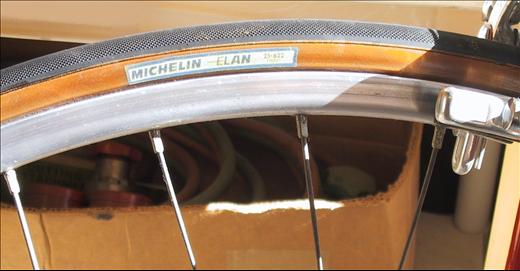
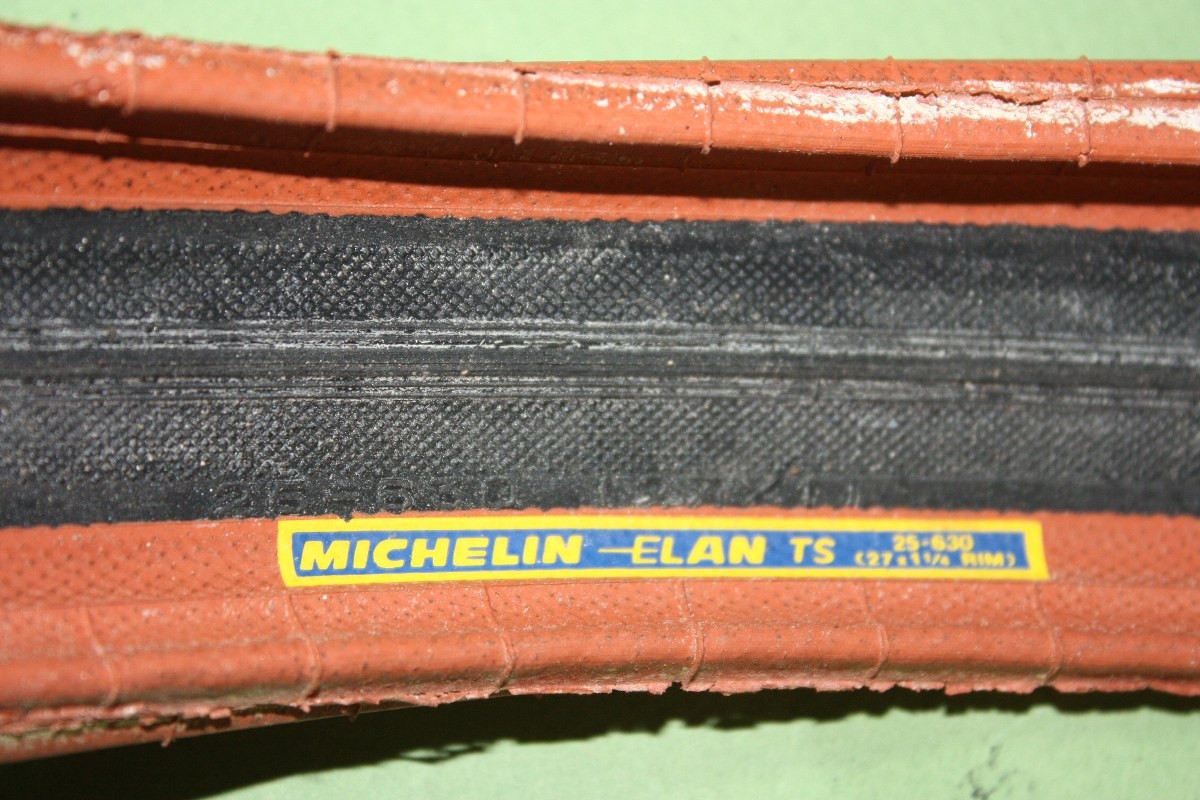
TS models were folding, I think.

Argyle socks compulsory for Elan users (LvI excepted)


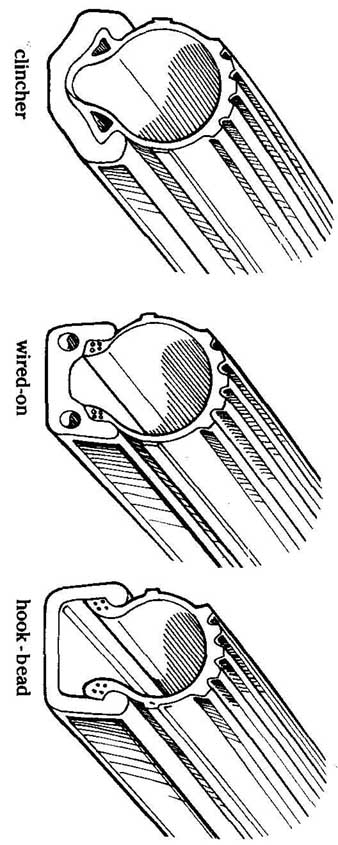

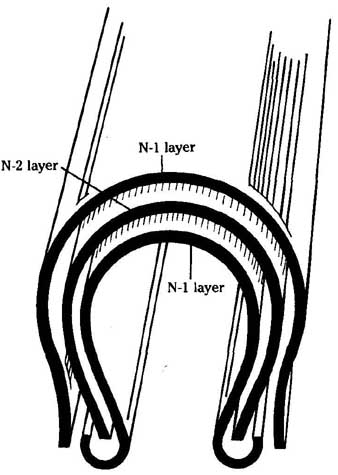
Hi-Lites replaced 'Elan' models and had white sidewalls but carcasses were still made using a crappy mesh fabric, and therefore were just as good as Elans (i.e. not very). The Hi-Lite lay-up is illustrated above.

eventually the Hi-Lite was (thankfully) consigned to the dustbin of history. The replacement tyres 'Axial' and then 'Axial Pro' (sport, race etc etc) were a good deal better. The only signs of mesh fabric are in the chafers with these tyres. There was also an 'Axial Pro Lite' tyre model; one of my favourites for summer use, pretty lively, very fast and comfy, only weighing ~190g in 23C size. The standard Axial Pro was only ~20g heavier but nothing like as nice to ride on.
Michelin then produced the Pro2, Pro3, Pro4 etc series. AIUI the casings are all developments of the Axial Pro casing.
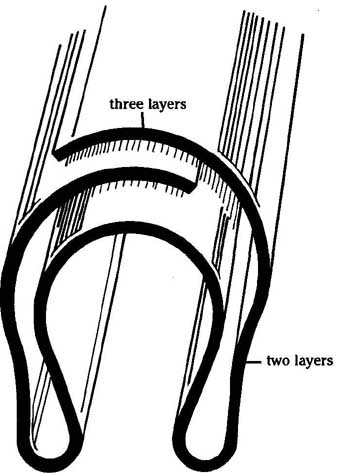
'conventional' tyre lay up, showing how a single piece of (unidirectional) fabric can be made to give a bias-ply carcass. I think Axial Pro tyres are made this way.
Mavic Module E rim

and heavier Module 3 (~22mm external width, ~520g) rims
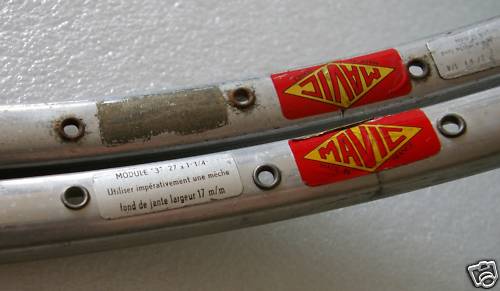
first appeared with 'old style' mavic sticker, and rim tape warning sticker.
Later Module E (single eyelet) and Module E2 (double eyelet) rims had the green patch on the rim label, with 'argent' for matt anodised rims. Some rims appeared with (slightly shinier) anodising but no 'argent' label.
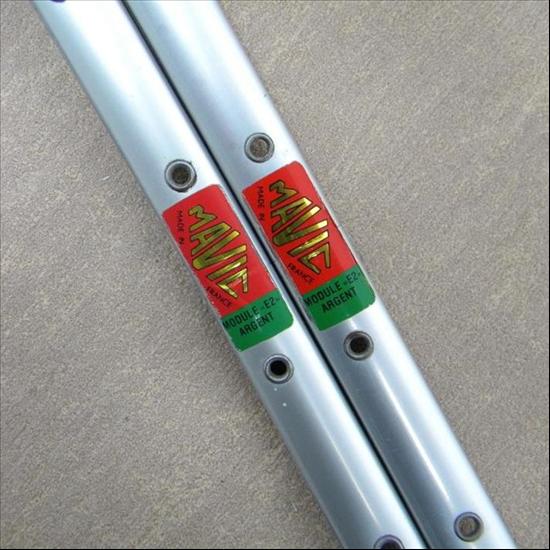
G40 rims used the same extrusion as E, E2 but with hard grey anodising.
Mavic 1984 catalogue

MA2 rim replaced E2 model a year or two later, at first with similar labels, later with 'mountain motif' rim decals. Module 3 rim (which had ~2mm brake surface thickness) carried on even into 'mountain motif' times. I think it was finally dropped when the MA3 rim was introduced.

may you always have wings upon your wheels
cheers